The University of Pittsburgh and UPMC have always been at the forefront of groundbreaking advances in the field of anesthesiology. Many world-renowned clinicians and researchers from Pittsburgh have made their mark in the specialty as well as the broad field of medicine. Their contributions have enabled us to flourish into one of the best anesthesiology departments in the nation.

In 1955, Joseph H. Marcy, MD, became the first chief of anesthesiology at Children’s Hospital of Pittsburgh and the first physician anesthesiologist to be directly affiliated with Pitt. Dr. Marcy made significant contributions to the specialty of pediatric anesthesiology. His implementation of routine tracheal intubation, monitoring of vital signs, and fluid administration are all credited with greatly reducing surgical and anesthetic morbidity and mortality.
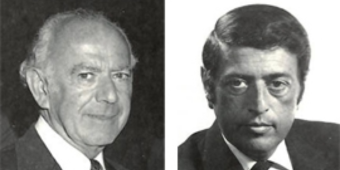
In 1947, Francis F. Foldes, MD, was recruited to develop the anesthesiology department at Mercy Hospital (now UPMC Mercy). He established a residency program, a research laboratory, and the first myasthenia gravis clinic in this part of the United States. Naloxone, still the principal narcotic antagonist, was first administered to patients at Mercy. Dr. Foldes also introduced and popularized succinylcholine to North America. His research had a dramatic impact on the practice of anesthesiology and surgery.
In 1960, Ephraim S. Siker, MD, succeeded Dr. Foldes as Chair at Mercy. Dr. Siker is credited with performing one of the first halothane anesthetics in the US. He also invented a mirror blade laryngoscope still used today. In 1972, he was chosen by President Nixon to lead a medical team during his visit to China. He received the ASA’s Distinguished Service Award, trained several future academic chairs of anesthesiology departments, and served as Executive Director of the Anesthesia Patient Safety Foundation.
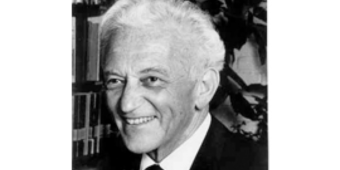
Peter Safar, MD, was recruited from Johns Hopkins to the University of Pittsburgh in 1961 to establish Pitt’s Department of Anesthesiology and Critical Care Medicine. Dr. Safar was responsible for many tremendous achievements spanning the broad scope of medicine:
- He was a pioneer and inventor of CPR. His close friendship with Asmund Laerdal led to the development of the “Resusci-Anne” mannequin, which became a widely used CPR training tool, and he co-authored the first widely accepted CPR instruction manual. For these efforts, he was nominated for the Nobel Prize in medicine in 1990, 1992, and 1994.
- He established one of the first multidisciplinary ICUs in the US and an internationally recognized ICU fellowship program.
- He played an important role in the organization of emergency response units and in establishing national guidelines and standards. He founded the Freedom House Ambulance Service and trained the nation’s first paramedics.
- He recruited Mr. Gilbert Davis to start a respiratory therapy clinical training program at Presbyterian, which became the first respiratory therapy school in Pennsylvania and one of the first six AMA-approved schools in the nation.
- He founded the International Resuscitation Research Center to improve the treatment of traumatic brain injury, cardiopulmonary arrest, and severe hemorrhage. This was renamed the Safar Center for Resuscitation Research in 1994.
- In 1999, Dr. Safar’s native country of Austria awarded him the "Cross of Honor" for his service to the field of medicine.
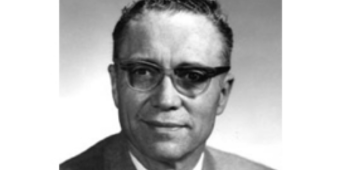
Robert A. Hingson, MD, Chief Anesthesiologist at Magee-Womens Hospital from 1968 to 1973, was a medical innovator and a renowned humanitarian who was nominated for the Nobel Peace Prize. He was well-known for his role in introducing epidural analgesia during labor and delivery and developing continuous caudal anesthesia. However, Dr. Hingson was most famous for inventing the jet injector for immunization, which enabled more efficient mass inoculation without the need for needles and syringes. In 1958, Dr. Hingson and his team inoculated some 90,000 people throughout Asia and Africa against typhoid, cholera, and polio. These large-scale medical missions led him to establish the Brother's Brother Foundation.

Peter M. Winter, MD, our second department chair, devoted himself to promoting excellence in patient care and the development of anesthesiology subspecialties, teaching, and innovation, helping to solidify Pitt’s position as one of the nation's top research and academic anesthesiology departments. He also recruited and developed many notable clinicians and researchers such as Dr. Yan Xu from the University of California at San Francisco. An accomplished researcher who has made significant contributions to the field of anesthesia mechanisms, Dr. Xu developed into a dedicated educator and mentor with a high priority to advance the careers of the next generation of academic anesthesiologists and eventually became our Vice Chair for Basic Research.
During Dr. Winter’s tenure, anesthesia-related deaths decreased markedly. His leadership played a crucial role in many of the University's notable accomplishments in transplant, neurological, and cardiac surgery. By emphasizing the multidisciplinary cooperation required for those breakthroughs, Dr. Winter called attention to the crucial roles of the anesthesiologist and intensivist.
Under his leadership, we became one of the first anesthesiology departments to establish a simulation training center. In 2001, the facility was named The Peter M. Winter Institute for Simulation, Education, and Research, or "WISER," in honor of Dr. Winter. WISER has since grown into an institute utilized by all specialties and practitioners from many countries, utilizing simulation-based education to enable safer patient care in Pittsburgh and around the world.

Leonard L. Firestone, MD, led the department through significant development and expansion. In 1999, we ventured into international territory with the start of anesthesiology services at IsMeTT in Palermo, Italy.
Dr. Firestone catalyzed notable growth in basic science research. He conducted innovative research on anesthetic mechanisms and recruited outstanding scientists. By the end of his tenure in 2001, we ranked first in the United States among anesthesiology departments in terms of funding received from the NIH.
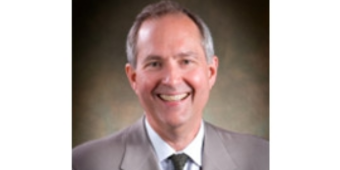
John P. Williams, MD, successfully guided the department through a period of unprecedented growth as UPMC and our health plan blossomed into an integrated delivery and financial system. We integrated UPMC Mercy, East, McKeesport, and Passavant into our group during this era. Dr. Williams also established the Pittsburgh Center for Pain Research, further solidifying our ranking as one of the top academic anesthesiology departments in the nation.
Educational programs greatly expanded under the direction of Rita M. Patel, MD, who has served us as well at Pitt’s School of Medicine and UPMC as a renowned anesthesiologist and educator. She became Director of the Anesthesiology Residency Program and built it from the ground up into what many consider one of the top five residencies in the country. During this time, she was a finalist for the ACGME Parker J. Palmer Courage to Teach Award, given to the top 2% of program directors in the country. Dr. Patel would go on to progressively advance into educational leadership positions at the University, hospital, and national levels.
Mark E. Hudson, MD, MBA, developed into an expert in innovative operational management and healthcare economics also during this era. After serving in management at UPMC Shadyside, he joined our executive administrative team as Vice-Chair for Clinical Operations, overseeing all anesthetic sites and divisions throughout the health care system. Later, Dr. Hudson advanced into progressively larger management roles, first as Executive Vice Chair of the department and then Executive Director for Anesthesia Services for UPMC. His leadership resulted in a markedly more uniform department structure across all sites, improved clinical productivity per FTE, and a decrease in required system investment.
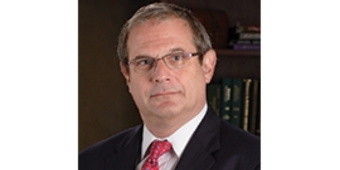
Dr. Marshall Webster served as Interim Chair from 2013 until September of 2015 when Howard B. Gutstein, MD, was formally appointed as Chair. Dr. Gutstein was previously a Professor in the Department of Anesthesiology and Pain Management at the University of Texas-MD Anderson Cancer Center, with a secondary appointment in the Department of Biochemistry and Molecular Biology. He is a very accomplished researcher, primarily investigating the molecular mechanisms underlying the development of opioid tolerance and dependence and the interactions between pain and analgesic signaling. Dr. Gutstein stepped down as chair in the fall of 2017 to focus on his research.

Dr. Marshall Webster served as Interim Chair again from 2017 until August 2018, when Aman Mahajan, MD, PhD, MBA, became Chair. Prior to joining our department, Dr. Mahajan was Chair of the Department of Anesthesiology and Perioperative Medicine at the David Geffen School of Medicine and Director of Perioperative Services at UCLA Health, and also Professor of Anesthesiology and Bioengineering and holder of the Ronald L. Katz endowed Chair. In conjunction with Dr. Mahajan's appointment, our department was renamed the Department of Anesthesiology and Perioperative Medicine, reflecting both the breadth of Dr. Mahajan’s and our institutional interests.
When Dr. Safar arrived in Pittsburgh to start our department, only three physicians and 70+ nurse anesthetists provided all anesthesia services at five hospitals. Today, we serve over 20 clinical sites, manage about 300,000 cases a year, and have more than 200 faculty members and over 400 CRNAs.

